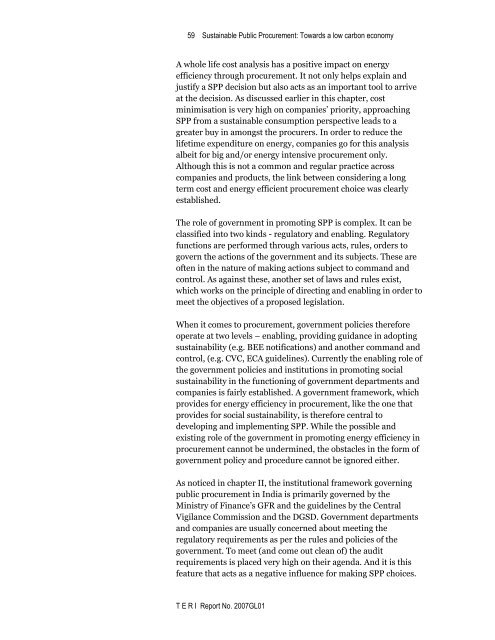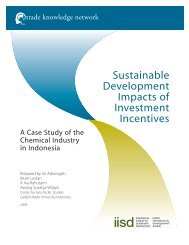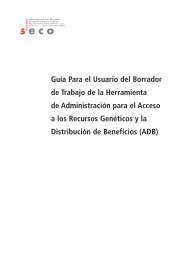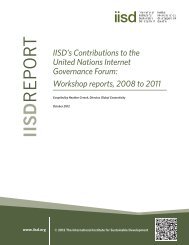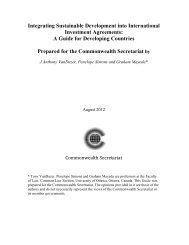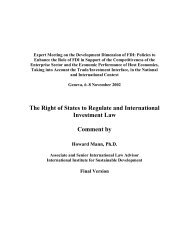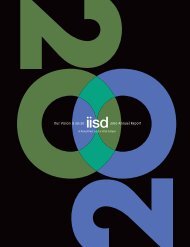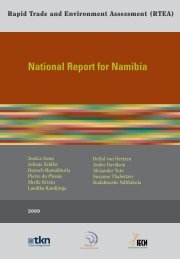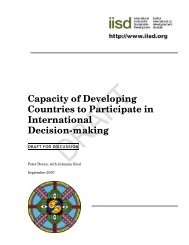Sustainable Public Procurement: Towards a lowâcarbon economy
Sustainable Public Procurement: Towards a lowâcarbon economy
Sustainable Public Procurement: Towards a lowâcarbon economy
Create successful ePaper yourself
Turn your PDF publications into a flip-book with our unique Google optimized e-Paper software.
59 <strong>Sustainable</strong> <strong>Public</strong> <strong>Procurement</strong>: <strong>Towards</strong> a low carbon <strong>economy</strong><br />
A whole life cost analysis has a positive impact on energy<br />
efficiency through procurement. It not only helps explain and<br />
justify a SPP decision but also acts as an important tool to arrive<br />
at the decision. As discussed earlier in this chapter, cost<br />
minimisation is very high on companies’ priority, approaching<br />
SPP from a sustainable consumption perspective leads to a<br />
greater buy in amongst the procurers. In order to reduce the<br />
lifetime expenditure on energy, companies go for this analysis<br />
albeit for big and/or energy intensive procurement only.<br />
Although this is not a common and regular practice across<br />
companies and products, the link between considering a long<br />
term cost and energy efficient procurement choice was clearly<br />
established.<br />
The role of government in promoting SPP is complex. It can be<br />
classified into two kinds - regulatory and enabling. Regulatory<br />
functions are performed through various acts, rules, orders to<br />
govern the actions of the government and its subjects. These are<br />
often in the nature of making actions subject to command and<br />
control. As against these, another set of laws and rules exist,<br />
which works on the principle of directing and enabling in order to<br />
meet the objectives of a proposed legislation.<br />
When it comes to procurement, government policies therefore<br />
operate at two levels – enabling, providing guidance in adopting<br />
sustainability (e.g. BEE notifications) and another command and<br />
control, (e.g. CVC, ECA guidelines). Currently the enabling role of<br />
the government policies and institutions in promoting social<br />
sustainability in the functioning of government departments and<br />
companies is fairly established. A government framework, which<br />
provides for energy efficiency in procurement, like the one that<br />
provides for social sustainability, is therefore central to<br />
developing and implementing SPP. While the possible and<br />
existing role of the government in promoting energy efficiency in<br />
procurement cannot be undermined, the obstacles in the form of<br />
government policy and procedure cannot be ignored either.<br />
As noticed in chapter II, the institutional framework governing<br />
public procurement in India is primarily governed by the<br />
Ministry of Finance’s GFR and the guidelines by the Central<br />
Vigilance Commission and the DGSD. Government departments<br />
and companies are usually concerned about meeting the<br />
regulatory requirements as per the rules and policies of the<br />
government. To meet (and come out clean of) the audit<br />
requirements is placed very high on their agenda. And it is this<br />
feature that acts as a negative influence for making SPP choices.<br />
T E R I Report No. 2007GL01


